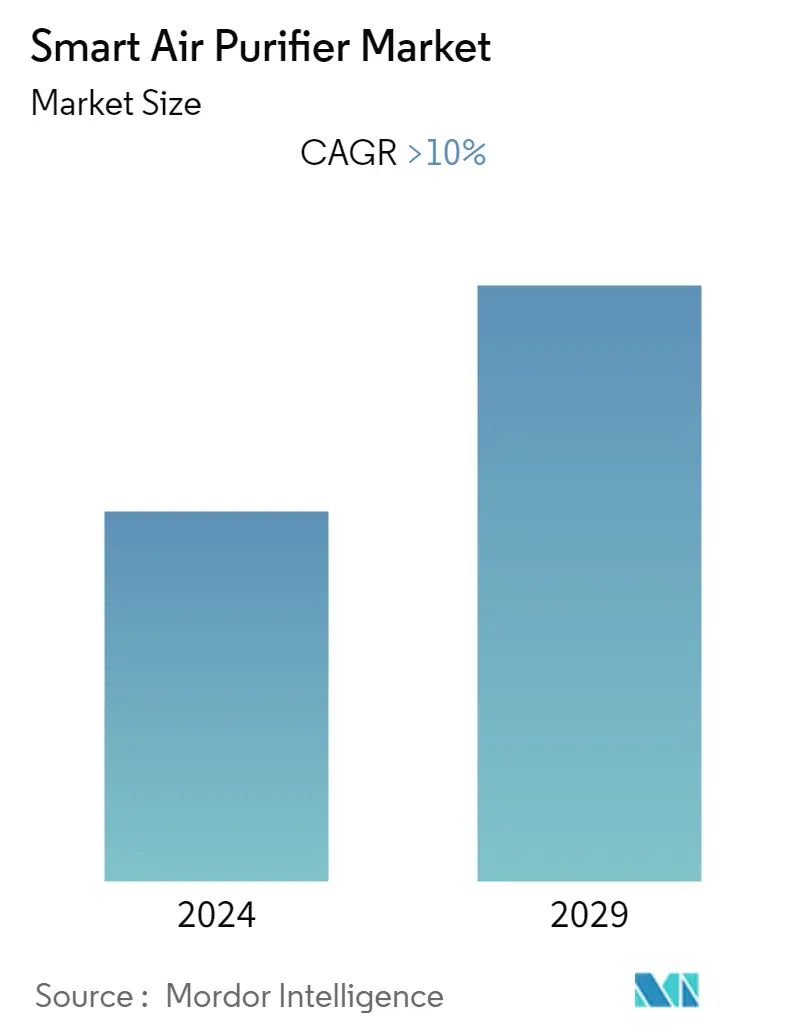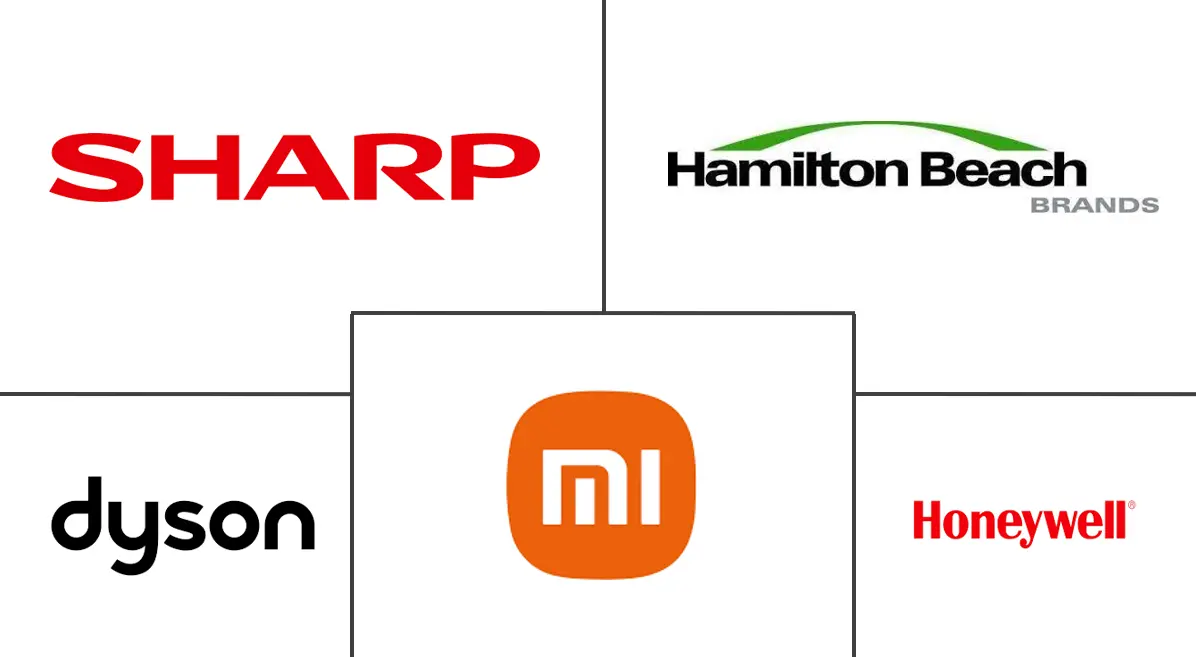Market Size of Smart Air Purifier Industry

| Study Period | 2020 - 2029 |
| Base Year For Estimation | 2023 |
| Forecast Data Period | 2024 - 2029 |
| CAGR | > 10.00 % |
| Largest Market | Asia-Pacific |
| Market Concentration | Low |
Major Players
*Disclaimer: Major Players sorted in no particular order |
Need a report that reflects how COVID-19 has impacted this market and its growth?
Smart Air Purifier Market Analysis
The Global Smart Air Purifier Market has generated a revenue of USD 2.92 billion in the current year and is poised to achieve a CAGR of 10% for the forecast period.
The smart air purifier is a modern version of a traditional air purifier that automatically filters the air for various end users. It can be controlled remotely by using an app on smartphones linked to smart air purifiers via wireless networks like Wi-Fi and Bluetooth. The main advantage of the smart air purifier is that customers can monitor and manage indoor air quality and adjust basic settings via smartphones. Additionally, these gadgets collect information on air quality from specialized monitoring sensors, automatically clean the air in accordance with that data, and alert users when air quality levels change.
Users can manage these purifiers by fine-tuning the air-cleaning settings using apps designed for smartphones. Smart air purifiers are mostly used and installed in indoor settings, including homes, small businesses and industrial buildings, and automobiles. Smart air purifiers come with technology that automatically removes smoke, dust, and fumes from the air. These gadgets come in versions that release air scented with safe chemicals that can enhance the ambiance and aroma of the environment.
Because of the COVID-19 pandemic, many companies in the smart air purifiers industry were forced to temporarily halt operations in order to comply with new government regulations aimed at preventing disease spread. This halt in operations had a direct impact on the revenue flow of the air filter market. Furthermore, due to a lack of raw materials and workers during the lockdown, industrial product production has ceased. Furthermore, no new consignments were received by businesses in this industry. As a result, the suspension of industrial activities and subsequent lockdown for several months had an impact on smart air purifier market share, and the market is expected to recover slowly during the projection period.
Urban areas have become much more polluted as a result of fast urbanization and increased construction activities. The need for smart air purifiers is being driven by the requirement for clean, odorless, dust- and smoke-free air in the environment. People are now more technologically oriented, and considerable investments in high-end technological items are anticipated to be positive signs for the expansion of the global economy. Due to rising per capita income and spending on medical equipment, it is projected that sales of these air purifiers would continue to climb in the near future.
High maintenance costs, frequent filter replacement, and premium installation fees have made air purifiers an overpriced expensive gadget, impeding market growth in the forecasted period.
